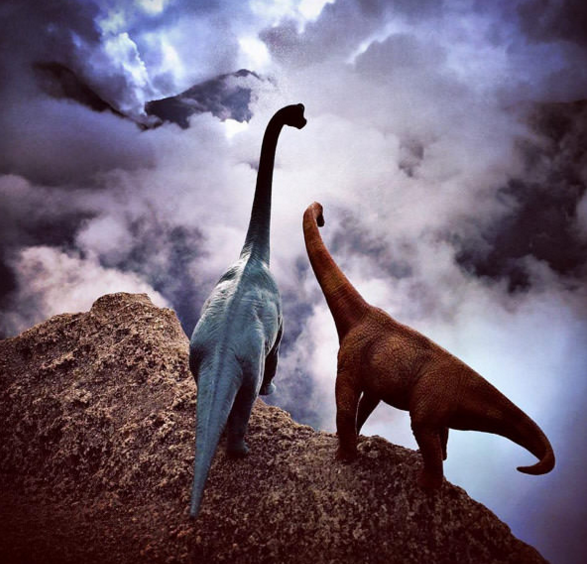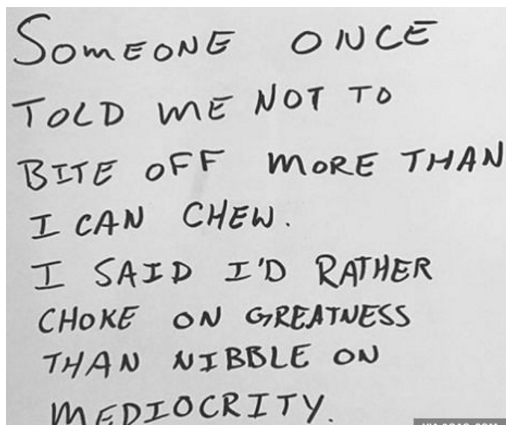The Farpoint Voyager Club meets the third Saturday of every month. Today was the third Saturday.
The Farpoint Voyager Club met.
You must admit, my logic is impeccable.
Renaissance Academy is the home to the Farpoint Voyager Club. We have over eighty members ranging in age from 10 to 18 years old.
Our meetings start at 8:00 A.M. I welcomed the cadets with an appropriate mixture of wit, humor, news, and announcements. After my opening monolog, I gave away CMSEC simulator posters. To add value to the posters, I offered to autograph them at no additional charge. Wouldn't you want to own a poster of your favorite CMSEC simulator with the founder's signature scribbled across the margin? We all know my signature is an artwork unto itself - completely unforgeable. Students have tried unsuccessfully for years. What a collector's item!
At 8:15 A.M. we broke into our workshops. Alex Debirk teaches principles of engineering. Mark Daymont teaches space history. I cover space simulator studies. Today we took a tour of the Voyager II. Afterwords, I motivated them to continue to work hard in their math and science classes.
The club's departments meet after the class rotations.
The Drama Department, headed by Lindsey, worked on several different acting scenarios related to simulator missions.
Matt Ricks and Ben Murdock work with department head McKay Hardy.
The Voyager cadets in the Engineering / Instrumentation Department had their first introduction to Sketch (3D modeling). They'll use Sketch to design a new generation of handheld phasers. We'll 3D print the phasers, install LED lights and sound, and use them in our missions.
McKay worked with Edward on the design and implementation of face recognition technology for the Voyager II.
Isaac leads the Animation Department. They met on the Voyager's bridge.
Orion is Isaac's assistant.
Blender was on the Animation Department's agenda today. The cadets used the program to model and animate what looks like a gingerbread man. It's a beginning class so we don't want to overwhelm them.
While not technically a department, Drake worked on the Voyager's new universe. Drake, MacKenzie, and perhaps a few others are hard at work fleshing out the science fiction universe the Voyager will operate in.
Projectvoyager.org is the place to go to learn about the Farpoint Voyager Club. Come join us!
Mr. Williamson
Space and Science News
By Mark Daymont
SpaceRubble.blogspot.org
ISS Crew Arrives
Nighttime launch of Soyuz TMA-20M from Baikonur.
ISS crew rotations continued yesterday with the launch of Soyuz 46 (TMA-20M) during a night launch from Kazakhstan. On board were Soyuz commander Alexey Ovchinin, cosmonaut Oleg Skripochka, and astronaut Jeffrey Williams. They are forming the second half of Expedition 47 which is currently in command of the International Space Station. That half of the crew consists of Expedition commander Timothy Kopra (NASA) and flight engineers Timothy Peak (UK) and Yuri Malenchenko (Roscosmos).
The Soyuz had a fourth honorary crewmember, a fluffy owl. View of Ochinin and Shkripochka in the cramped Soyuz capsule.
Opposite view. Jeffrey Williams monitors the flight plan while the owl hangs by a string from the console, indicating the craft is still under acceleration.
Once the Soyuz spacecraft separated from the third stage and shut down acceleration, the microgravity of zero-G kicked in and the little owl floated out of view. The fluffy doll was given to its task by Ovchinin's daughter. During flight, the couches are far enough from the console that a telescopic rod is used to reach and press buttons and switches.
Russian mission control outside of Moscow monitors the orbital progress of the Soyuz.
After a six-hour chase of the orbiting ISS 251 miles above the Earth, the Soyuz spacecraft slowed down and began maneuvering to dock with the station. The two spacecraft docked a short time later, and the hatch was opened once the atmosphere pressure check was completed.
50 Years Ago: Close Call for Gemini 8
Prime crew for Gemini 8 (L-R): Dave Scott, Neil Armstrong (mission command pilot).
Fifty years ago, mission Gemini 8 was planned to achieve a major goal in preparation for sending astronauts to the Moon: Rendezvous and Docking. Previously, an attempt to dock with an Agena target vehicle failed when the Atlas rocket carrying the Agena was destroyed. The crew of Gemini 6 was re-tasked to make a rendezvous with the long-duration crew of Gemini 7. They successfully met up with the other capsule, even getting so close as to be about a foot away from each other and practicing flying in formation. This time, NASA would try again to fly a Gemini capsule to the Agena target vehicle and actually dock. Following docking, Dave Scott would perform a two hour EVA to retrieve a small experiment from the nose cone of the capsule and activate an experiment on the Agena. This would have been the second spacewalk for NASA.
Atlas rocket launches with the Agena stage from LC-14.
On March 16, 1966, the Atlas rocket carrying the Agena target vehicle left launch pad LC-14 and successfully placed the payload into a 300-mile orbit of the Earth. About 100 minutes later, Gemini 8 blasted off from LC-19, placing the capsule into a 272-mile orbit. Both launches operated well and proceeded according to plan.
Gemini 8 lifts off from LC-19 on 3/16/66.
The astronauts used four thruster corrections to gain altitude and maneuver towards the target. The radar on the capsule located the Agena when it was 179 miles away, and the astronauts spotted the vehicle when it was 79 miles away. After 4 hours of flight, they successfully met up with the Agena and smoothly docked the two craft together.
View of the Agena Target Vehicle from the Gemini capsule window.
View of Agena from above.
Shortly after docking, a command was given to the Agena to turn the combined vehicle. However, the craft began to do a roll. Dave Scott used the thrusters to stop the roll, but it then started again. The two spacecraft began to spin. Armstrong noticed that their thruster fuel was lower than it should have been, and so the problem could be a problem with their own thruster. As the spin increased, they were both worried that either of the spacecraft could be damaged or break apart, so they released the docking and thrusted back from the Agena. During this time, the craft had been in a blackout zone where communications with ground was not possible.
Artist rendering of the spinning capsule. Credit: Glenn Johnson.
With the release of the Agena, the capsule began spinning even faster. As they re-entered communications range, they were spinning about once every second, and their vision began to be blurred and they could have lost consciousness. Armstrong then shut down the main thrusters and activated the re-entry thruster system (they later determined that thruster 8 was malfunctioning). Using his excellent piloting skills, Armstrong stopped the spinning and brought the craft under control. Mission Control confirmed that according to flight rules, once the re-entry system had been activated, the mission would end and Gemini 8 prepared for an emergency re-entry.
Gemini 8 with recovery divers in the Pacific.
Since the craft would be unable to land in the primary recovery zone, the secondary site was chosen about 100 km south of Yokosuka, Japan. The craft landed safely and divers were able to reach them quickly. It took about 3 hours for the recovery ship USS Leonard F. Mason to arrive. Although the mission ended in a near-disaster, the crew had already completed the important Rendezvous and Docking portion so it was considered a successful flight. Dave Scott and Neil Armstrong had also proven their valuable resourcefulness and flying skills.
USS Leonard F. Mason.
Hooking the capsule to a hoist.
Carefully lifting the capsule onto the deck.
Armstrong and Scott leave the ship after docking at Okinawa. This picture is interesting because i believe that's astronaut Wally Schirra following them on the gangway. He was probably assigned to the crew support role in the secondary landing area, and would have flown out to the ship via helicopter, or, perhaps came aboard to check on them once the ship docked.
The Imaginarium







































































































































































No comments:
Post a Comment